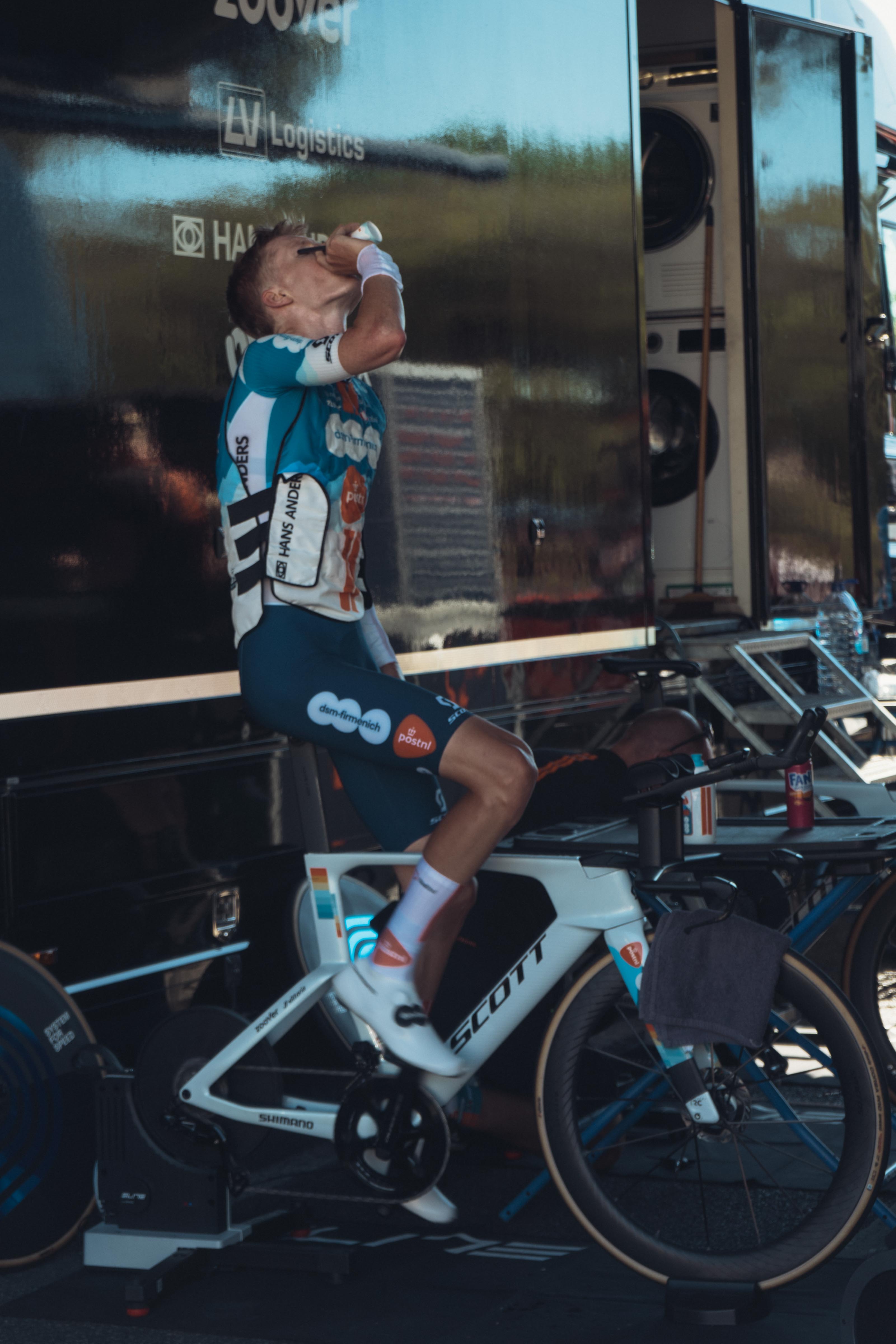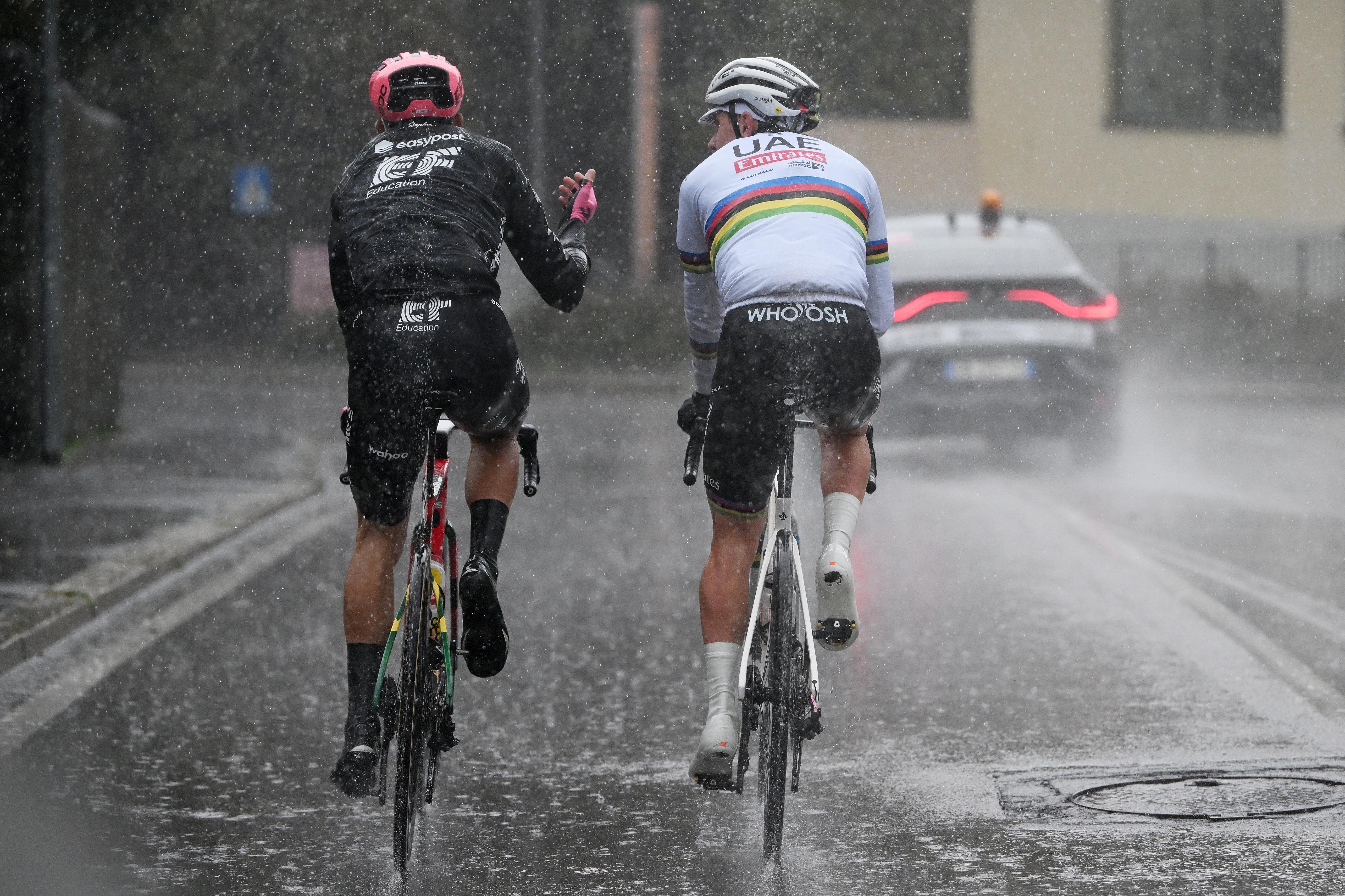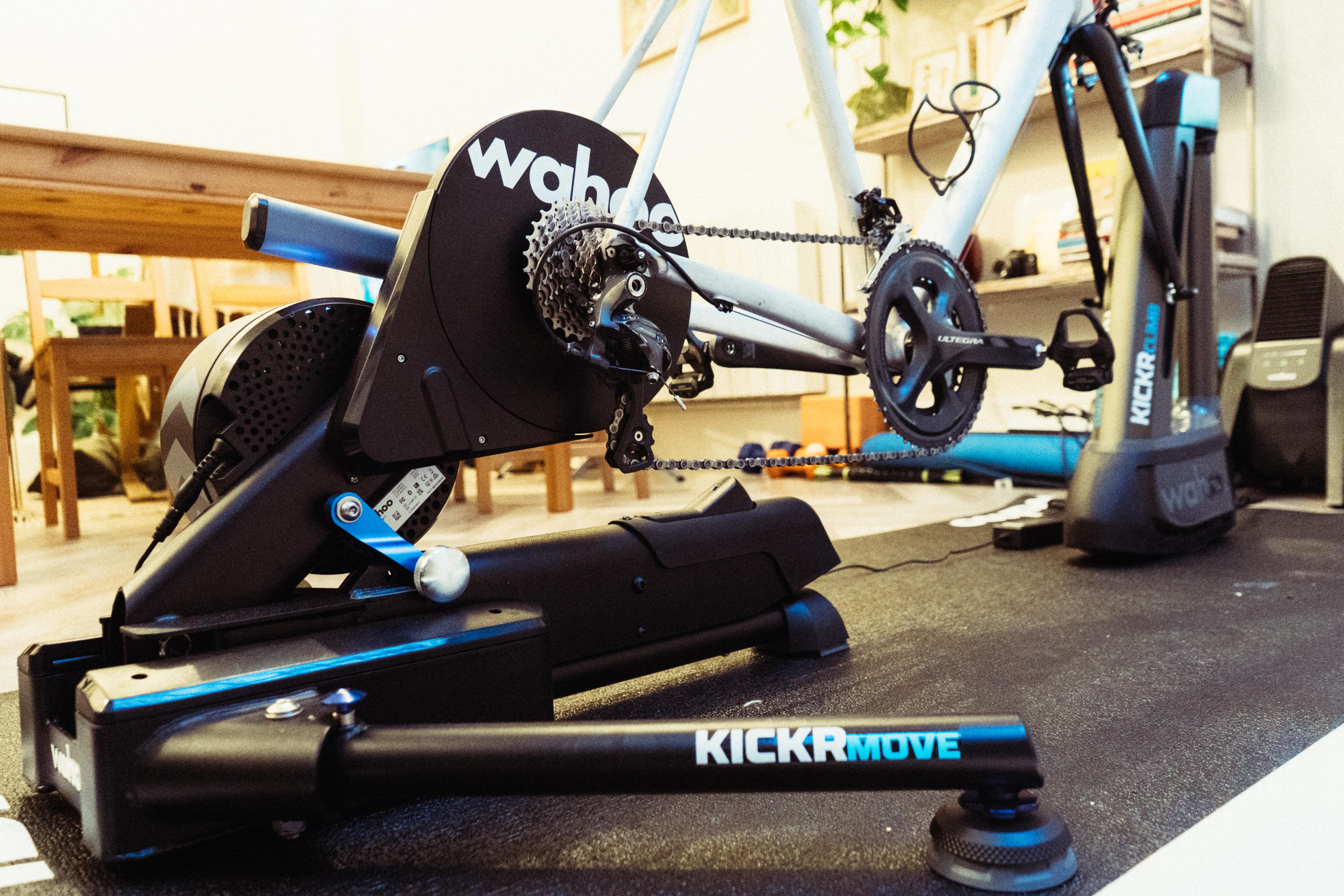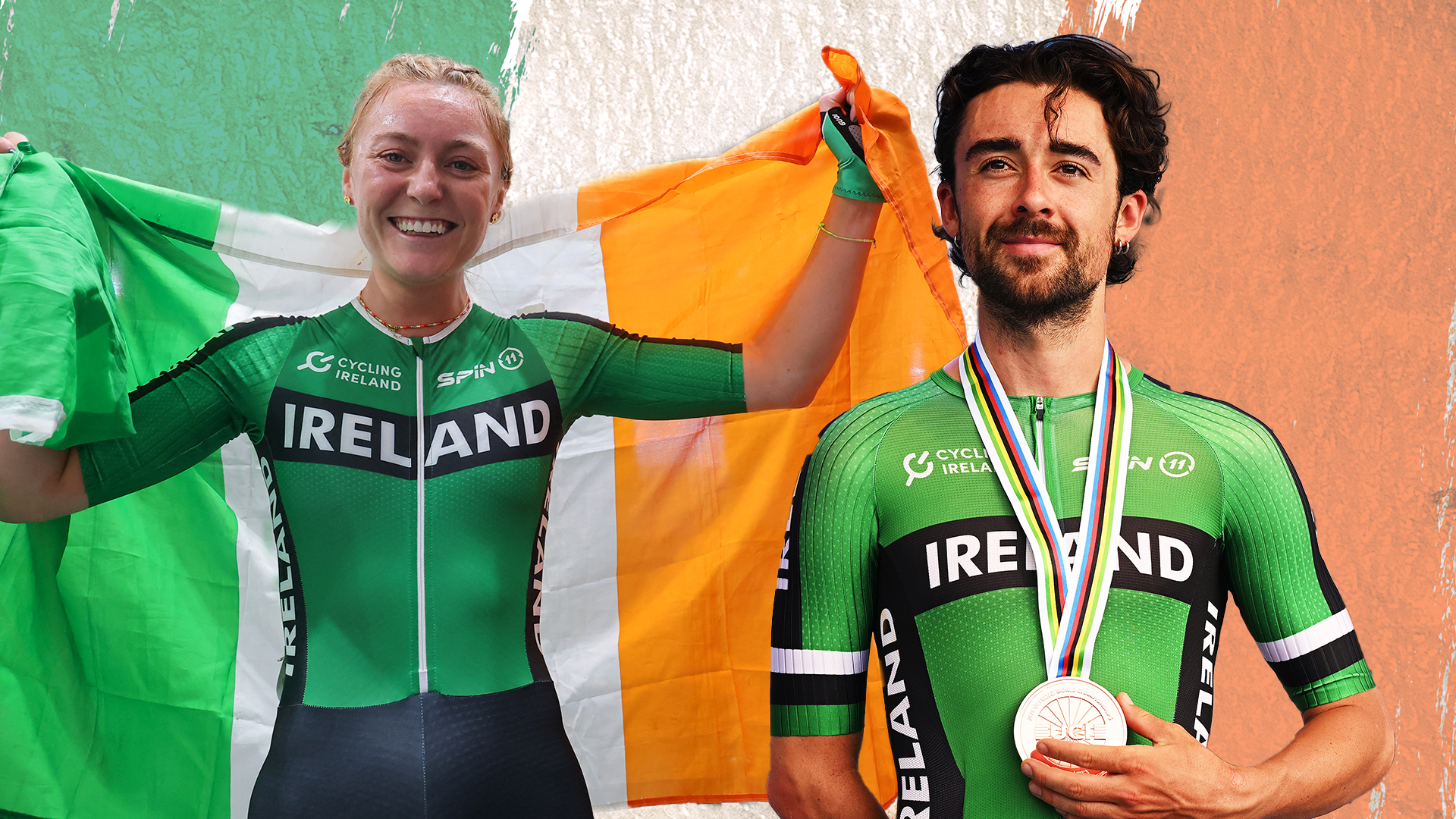Waterproof jackets are getting worse, but here are seven reasons why it doesn’t actually matter
Even though the changing regulations mean things are becoming less waterproof, in general terms it’s not as bad as it sounds

I have made it my main goal each season to bring you the best advice on how to stay dry on the bike. My guide to the best waterproof cycling jackets is distilled down from having over 50 jackets come across my desk in the last three or so years. Having tested so many I’m in a pretty good position to say with confidence that waterproof jackets, not just in cycling, are getting worse.
This is almost totally down to changing regulations. The future of waterproof clothing is a market free from PFAS - or so called ‘forever chemicals’ - and while this is better for the environment it is worse for staying dry. I’ve written at length on the chemistry behind these changes, but in simple terms for the purposes of this article the key thing is that fluorine is getting axed from manufacturing. That means no more PTFE membranes, and durable water repellent (DWR) treatments are becoming less D, and also less WR.
Gore-Tex is the biggest casualty in all this, as the brand had built its reputation around the PTFE membrane, and I’ve seen a pretty giant shift away from Gore in the cycling industry towards Pertex Shield. It performs excellently, as evidenced by jackets like the Maap Atmos and the Albion Zoa Rain Shell, but when I compare the very best of modern, PFAS free garments to jackets like the soon to be banned Rapha Pro Team Gore-Tex, and especially to things like old Shakedry jackets, they just aren’t as good.
The water repellency cannot withstand as much, and as such they wet out faster and don’t breathe as well. Speaking to Rapha at the launch of its latest, non-PTFE Gore-Tex jacket I was told pretty flatly that the latest tech just can’t match old school, fluorine based DWR treatments and PTFE membranes.
If you live somewhere wet, and especially if you are shopping for a new waterproof jacket, this may seem like a downpour of bad news. Well, I’m here to spin things to a more positive skew with seven reasons why it doesn’t actually matter.

It's better for the environment
I think we can all probably agree that this is the big one. Staying dry while riding a bike is an excellent endeavour, and one I take extremely seriously, but when set against the potential damage that manufacturing using PFAS can do to the environment it’s not actually that big an ask to take a slight drop in performance. I could spend hours outlining why fluorine = bad, but the easiest and most enjoyable thing to do (besides reading my other articles on the matter) is to watch the 2019 film Dark Waters, starring Mark Ruffalo. As well as being just an excellent movie it perfectly frames the modern discourse on PFAS and why their removal from the supply chain is necessary.
I’m not saying there’s anything inherently unsafe about using old waterproof technology so don’t worry on that front. I use it myself still, and continuing to use garments you already have is the most sustainable way to go.
The latest race content, interviews, features, reviews and expert buying guides, direct to your inbox!
New jackets aren’t as good, but that doesn’t mean they are bad. Take the Albion Zoa for instance. It’s a jacket I would have absolutely no qualms about wearing while heading out for a coastal ride in an atlantic storm. It is still a phenomenally capable bit of kit, only requiring more regular reproofing to keep it performing at its best.
Cycling often gets a pass on environmental fronts because it is ‘green transport’, and this seems to cover all manner of sins, so while I lament the demise of properly amazing waterproofs I am happy to occasionally get a bit wetter for the cause.

It’s going to rain less
According to Scripps Institution of Oceanography, UC San Diego:
“By the end of the 21st century, some parts of the world can expect as many as 30 more days a year without precipitation.”
These areas don’t include Britain it must be said, and it does look like those of us perched on a small island in the north atlantic are actually going to see more rain. But areas with a Mediterranean climate, which includes places like California as well as the Mediterranean nations, as well as Central America and places such as Indonesia are going to see fewer rainy days per year.
This doesn’t necessarily mean less rain, but the rain that does fall is predicted to occur in narrow periods of time, which makes avoiding downpours entirely a lot easier.

The rain is heavier, which is actually better
This may seem counterintuitive, but in speaking with Dr Mark Taylor, Research Officer at the University of Leeds who specialises in waterproof clothing (and runs the textile department’s rain room for testing such clothing) I found out that making a waterproof jacket work in a downpour is actually relatively easy, while getting one to work in mist or drizzle is next to impossible.
It all comes down to kinetic energy. Giant, high-energy raindrops of the like you’d find in a North American cloudburst have so much kinetic energy that they basically just bounce off. Mist, drizzle, or even mizzle (a real thing, I can assure you) instead settles gently on your jacket, and is much harder to clear for a DWR.
Climate change means in general there’s going to be more heavy rain in general terms. While it may look daunting heading out in an absolute deluge, your waterproof jacket will probably perform better than it will on a drizzly day.
Weather forecasting is much better
At each of our fingertips thanks to smartphones and the supercomputers doing the actual forecasting, we have minute by minute weather information. No longer do we have to head out on a ride and hope for the best, we can find out before we leave what the chances of rain are.
I have regularly delayed a ride or brought it forward to hit a nice dry weather window. To an extent, we can choose our own weather conditions now, and the flip side for me at least is that if I need to go out and test another waterproof jacket I can plan my day around when it is going to rain, rather than when it isn't.
Working is more flexible now
Going hand in hand with better weather forecasting is a shifting work culture. I admit that I am a soft, coddled, working-from-home media boy and as such am perhaps not representative at all, but the post-Covid landscape has seen more of us working remotely for more of the time, and often this comes with an acceptance of more flexible working hours too. If it’s going to be sunny at lunchtime and rainy after work then I’m able to simply ride at lunchtime when it’s pleasant out, and work later in the day when it’s utterly miserable.

Softshells are better
Something that has occurred off the back of the PFAS ban is a greater consumer focus on breathability and less on being the absolute most waterproof option. This has meant the softshell jacket, normally the preserve of hard riding in the cold and light showers, has improved too. The Castelli Perfetto RoS 2 from my guide to the best winter cycling jackets is a prime example of this, and even going back to my original Castelli Gabba there are conditions that it can endure that provide significant crossover with waterproof jackets.
The lines are being blurred still further by PFAS-free jackets like the new Castelli Gabba R, which is waterproof to a degree, but has a much higher emphasis on breathability, and I’ve found it to be useful over a pretty astounding range of conditions as long as you get your base layers right. All told, while waterproofs might be getting worse, softshells are certainly getting worse.

Indoor cycling is great now
This is perhaps the biggest piece of the puzzle. While I have been abstinent with regards to Zwift and the other indoor apps for years I have relented this year and I’m not blind to the fact that the number of people who ride indoors is huge. With indoor cycling so well catered for nowadays thanks to the best smart trainers and a plethora of associated hardware, the reasons to head out when the weather is truly awful are few and far between.
I have in my possession perhaps the most extreme cycling jacket ever made. The outer skin is Gore-Tex Shakedry, the inside is lined with Polartec Alpha high loft fleece insulation, and it even has a built-in hood and face shield. It gets used on average once a year, mostly to justify it taking up a not insignificant amount of clothes rail real estate, and to be honest when the options are ‘head out in freezing rain and driving wind for a few hours’ or ‘hop on the trainer and watch three of four episodes of Peep Show’ the choice is becoming increasingly hard to make.
Yes, waterproof jackets are getting worse, but with even a budget smart trainer the times when you absolutely need to ride in terrible weather are severely limited.

Will joined the Cyclingnews team as a reviews writer in 2022, having previously written for Cyclist, BikeRadar and Advntr. He’s tried his hand at most cycling disciplines, from the standard mix of road, gravel, and mountain bike, to the more unusual like bike polo and tracklocross. He’s made his own bike frames, covered tech news from the biggest races on the planet, and published countless premium galleries thanks to his excellent photographic eye. Also, given he doesn’t ever ride indoors he’s become a real expert on foul-weather riding gear. His collection of bikes is a real smorgasbord, with everything from vintage-style steel tourers through to superlight flat bar hill climb machines.
